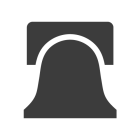Lawmakers struggling to add prescription drugs to Medicare
without busting the federal budget have several government models
to consider-and most lawmakers are ignoring them.
For example, The New York Times profiled a Department of Veterans
Affairs program Sept. 4 that allows millions of veterans to gets
prescription drugs, but noted that lawmakers have "disregarded" it
as they work on a compromise bill to send to President Bush.
The Heritage Foundation by no means thinks that the VA's approach
is well suited to deliver drug benefits to seniors. But we do view
another federal program as an excellent model for sorely needed
Medicare reform.
It's the Federal Employee Health Benefits Program or FEHBP. It
covers 9 million federal employees and retirees and routinely
offers up to two dozen health plans, all of which have prescription
drugs. And it's not some new-fangled program, either. It's been
around since 1960, five years before Medicare started.
The House calls for a pluralistic FEHBP-like system to be in place
by 2010. But the Senate does not. Instead, it offers a
one-size-fits-all prescription drug entitlement that will cost $432
billion in the first 10 years, according to the Congressional
Budget Office.
FEHBP is a good model because it works. Why senators ignore it,
we'll never know.
For more information or to receive an e-mail version of "Medicare Maladies," contact [email protected] or call Heritage Media Services at (202) 675-1761.
("Medicare Maladies" is a regular feature, launched 7/14/03, from The Heritage Foundation. Sad to say, there's another malady coming your way tomorrow. Daily "maladies" are also available on heritage.org.)




